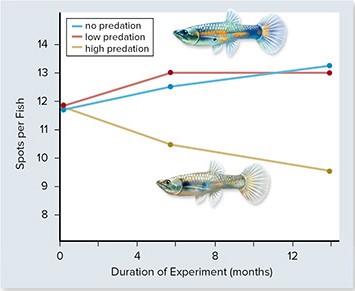 In the experiment above, guppy color patterns (spots) were measured in populations exposed to increasing amounts of predation. From this you could conclude that ________.
In the experiment above, guppy color patterns (spots) were measured in populations exposed to increasing amounts of predation. From this you could conclude that ________.
A. evolutionary changes take millions of years to appear
B. brightly colored guppies are more likely to reproduce in the presence of predators
C. predators are more likely to catch and eat brightly colored guppies
D. predators do not affect the color patterns of guppies
E. predators are less likely to catch and eat brightly colored guppies
Answer: C
You might also like to view...
A chemoorganotroph and a photoautotroph in the same environment would NOT compete for
A) oxygen. B) carbon. C) nitrogen. D) carbon and oxygen.
Enzymes _____
a. are proteins, except for a few RNAs b. lower the activiation energy of a reaction c. are changed by the reactions they catalyze d. are proteins, except for a few RNAs and lower the activation energy of a reaction
Which neurotransmitter is involved in both Parkinson's disease and ADD?
A) acetylcholine B) dopamine C) serotonin D) GABA
Which is a major group of enzyme-linked receptors?
a. G proteins b. ion channels c. tyrosine kinases d. phospholipases e. adenylyl cyclases